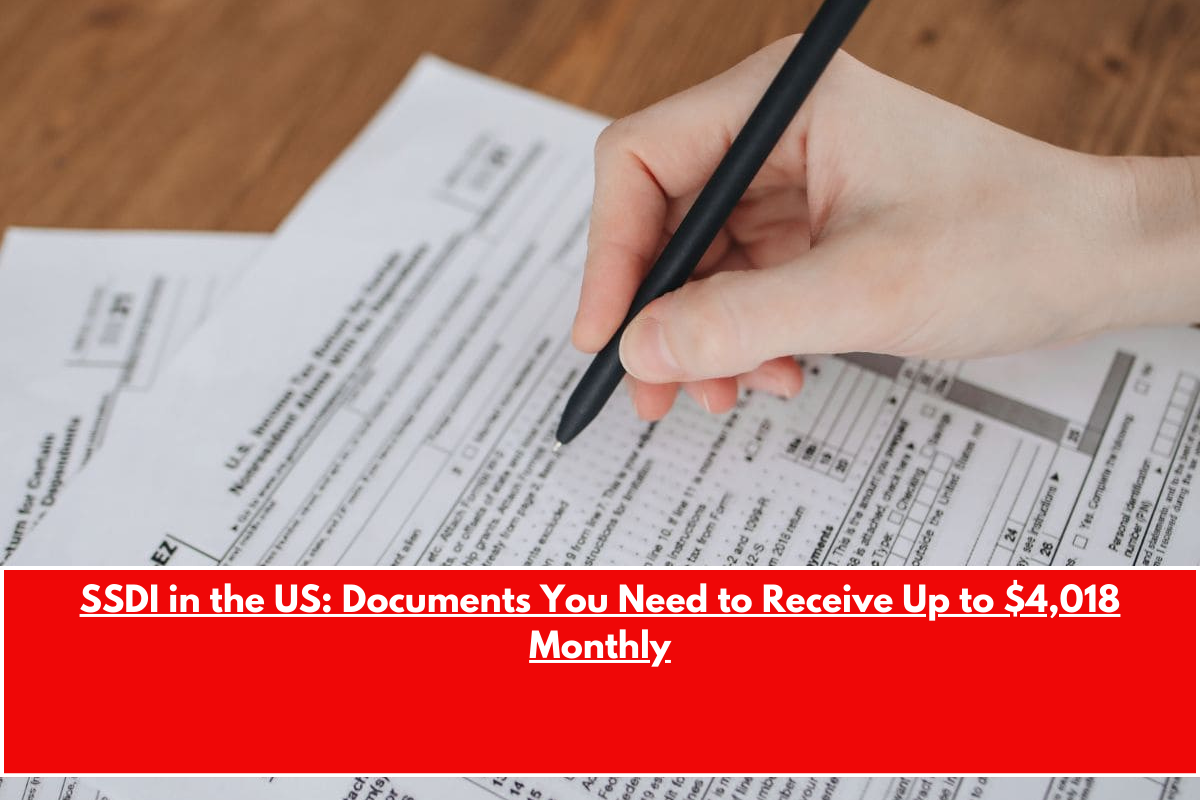If you’re living in the United States and have a disability that prevents you from working, you may be eligible for Social Security Disability Insurance (SSDI). This program can give you up to $4,018 per month in 2025. But many people miss out on this benefit simply because they don’t know what documents they need to apply.
Whether your disability is temporary or permanent, submitting complete and correct paperwork is a must. Missing even one important document can result in your application being delayed—or denied.
This guide explains the required documents, payment schedule, and key points you must know before applying.
What Is SSDI and Who Can Get It?
SSDI is different from Social Security retirement benefits. You can apply for SSDI even if you are younger than 62, as long as you:
- Have a qualifying disability
- Have worked and paid Social Security taxes in the past
- Submit the required documents as proof
This benefit is meant to support those who are unable to work due to medical reasons, not just retirees.
Documents Required to Apply for SSDI
To apply for SSDI, you must provide official legal documents that prove both your disability and your work history. Here’s what the Social Security Administration (SSA) will ask for:
1. Medical Documents
You must show clear medical evidence that confirms your disability. This includes:
- Reports from licensed doctors or specialists
- Lab test results, scans (like MRIs), and diagnosis records
- Notes on how the disability affects your daily life or ability to work
Make sure these documents come from authorized medical professionals. If they are not complete or up to date, your claim might be denied.
2. Work History
You need to show that you have worked in the past and paid into the Social Security system. For this, you must provide:
- Employment history
- W-2 forms or tax returns
- Records of Social Security tax contributions
The SSA uses this data to calculate how much SSDI you qualify for.
3. Identification Documents
Also include basic documents like:
- Birth certificate
- Social Security number
- Proof of US citizenship or legal residency (if applicable)
Even if you apply online, it’s a good idea to keep physical copies of all your documents as a backup.

SSDI Payment Schedule for April 2025
Once your SSDI application is approved, you’ll start receiving monthly payments. The next round of SSDI payments in April 2025 will follow this schedule:
- April 3 – For people who started receiving Social Security before May 1997
- April 9 – For those with birthdays from the 1st to 10th
- April 16 – For birthdays from the 11th to 20th
- April 23 – For birthdays from the 21st to 31st
Your payment method also matters. Direct deposit is the fastest way to get your money. If you chose to receive a paper check by mail, the payment may take a few extra days to arrive.
SSDI is a powerful support system for Americans who are physically or mentally unable to work. But the approval process is strict, and missing or incorrect paperwork can stop you from getting help—even if you qualify.
To avoid delays, make sure you submit all medical reports, work history, and ID documents correctly. Check your payment schedule and keep copies of everything. If you need help, the SSA has resources both online and by phone to guide you.
In 2025, monthly payments can go up to $4,018, so it’s worth applying correctly and on time.


















Leave a Reply